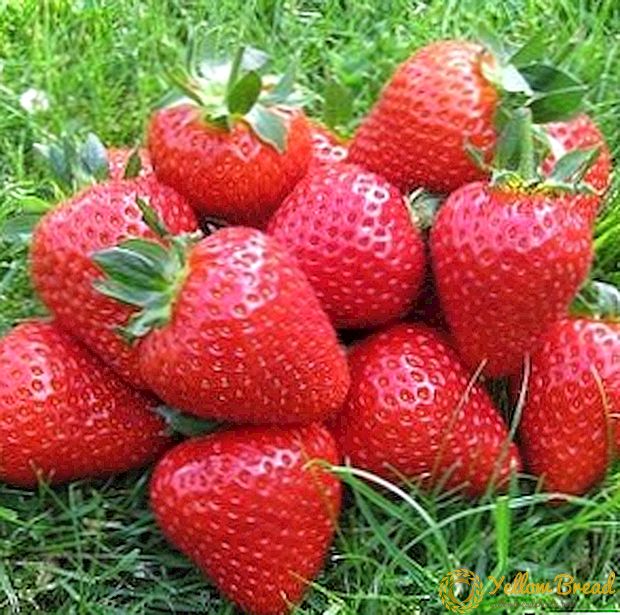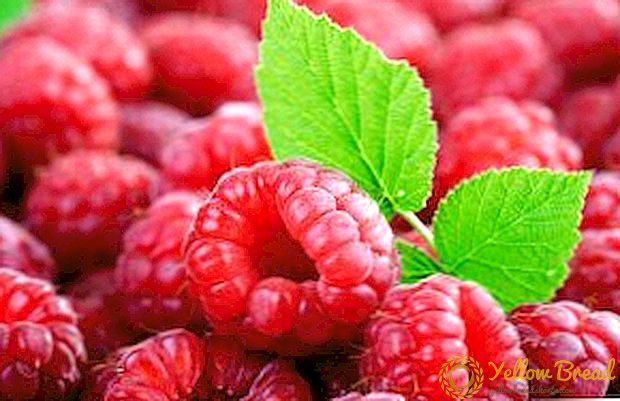
Everybody knows about white cabbage, because it is practically the cheapest vegetable that can be easily purchased on the market at any time of the year.
But tell me, why buy if you can easily grow it in your own garden.
I think most of the readers would agree with this thought, putting only one logical question: which varieties of white cabbage are best planted to provide these vegetables for a whole year?
It is with this question that we will try to understand the article below, where we will acquaint you with the most popular varieties of early, middle and late ripening.
Early ripe white cabbage: about the time of harvest and the best varieties
This group of white cabbage varieties is mainly intended to be consumed fresh immediately after the plants are removed from the beds.
Since they are called early, then they ripen the very first at the beginning of summer. In general, the vegetation period of plants of this group does not last longer than 105-120, that is, the time from the beginning of seed germination and to full maturity of cabbage heads.
Ultra early hybrid form of white cabbage "Dawn F1"

The name “Zarya” also carries another variety of this crop, however, this hybrid form has much more advantages, for this reason we will tell you about the hybrid.
The heads of this hybrid form of cabbage are of medium size, although they considerably exceed the variety of the same name by weight - their weight ranges from 1.6 to 2 kilograms.
The inner stump of this cabbage has a length of 4-6 centimeters, while the outer one can even reach 8 centimeters.
The shape of the heads generally occurs rounded and aligned. But most of all this hybrid is distinguished by the color and shape of the leaves: green with a weak wax coating, they have weakly cut or slightly wavy edges.
To the touch the surface of the leaves is very smooth, with slight wrinkles. Thanks to its excellent taste, salads and other dishes make it excellent.
Fruiting in this hybrid form is quite high, which in particular contributes to the large size of the heads. Matures they almost simultaneouslytherefore, in order to stretch the ripening time, it is recommended to sow the seeds with a certain frequency.
In general, from the beginning of the emergence of the first shoots to the onset of technical maturity, it usually takes from 107 to 118 days.
What is the value of cabbage "Dawn F1"?
- A great option for growing in the Central climatic region of Russia.
- Early and very high yields.
- There is a good resistance to cracking cabbage heads.
Unfortunately, but green cabbages of this cabbage with an average density are recommended solely in order to use them directly in fresh form. Are stored they not very long, and absolutely not suitable for pickling and even canning.
"Dumas F1" - early cabbage for thickened plantations

The heads of the hybrid form "Dumas F1" have a rounded classic cabbage shape. Their color is very interesting: from smoky green to light green.
The leaves are rather large, smooth in wavy edges. The taste qualities of this cabbage are at a very high level, and the commercial appearance does not lag behind at all. With a weight of heads of 0.8-1.5 kilograms, it is very profitable to grow it both for home use and for sale on the market.
A very large positive quality of this cabbage is that it is perfectly capable of bearing fruit even when it is thickened. At the same time, only poor agricultural practices can influence the size of heads, which makes it possible to get high yields anyway.
Also, cabbages "Dumas F1" ripen just in an unusually short time: technical maturity occurs within 55-57 days from the moment of planting in the garden of seedlings.
Merits ultra-early cabbage variety
- The highest resistance to cracking heads, even under very adverse conditions.
- The ability to remain well on the vine without damage and changes in taste.
- Good marketability and taste.
The disadvantages of cabbage "Dumas F1" also include only a narrow circle of its use and short shelf life.
The best varieties of mid-season cabbage especially for your vegetable garden
The area of use of middle-ripening varieties of white cabbage is somewhat wider than early. It is intended for fresh consumption in the autumn.
It can even be sour, only to maintain its taste in this form it will not be long - only 3-4 months. The ripening of such cabbage comes not much later than early - 130 days after sowing the seeds.
Mid-season white cabbage "Gift" - the best decoration of your garden bed

The shape of the heads of this variety usually occurs either round or flat-round. They have a medium density, but differ in light green leaf color.
A feature of the variety is also an ideal smoothness and brilliance of the leaves, which creates the impression of the presence of wax on them.
Mass of heads compared to early varieties, simply impressive - from 2.5 to 4, or even 5 kilograms. Moreover, the taste of cabbage "Gift" are at a high level.
The grade is intended not only for the fresh use, but also perfectly is suitable for a fermentation and salting.
Fruits cabbage "Gift" is very good. When planting its scheme of 0.5 by 0.6 meters from an area of 1m2, you can harvest harvests up to 15 kilograms without problems. Thus, all the resources invested in the cultivation of this cabbage are even excessively compensated by crops.
Moreover, the full maturation of the heads may occur even after 120 days, although for further salting or pickling, the cabbage should be kept a little more on the beds.
What is the grade valued for and what is it proud of?
- The most important feature and advantage of this cabbage is thatthat the variety grows well and bears fruit even in the conditions of the Siberian and Ural climatic regions of Russia. It is not even worth talking about other regions, since under more favorable conditions the variety gives even better yields.
- Fresh cobs are stored for up to 4 months.
- Excellent taste and presentation of the resulting cabbage.
- The variety has practically no flaws, it only requires careful maintenance, good farming practices and the prevention of pest and disease lesions.
Hybrid form of medium late cabbage "Menza F1": what special things does it hide in itself?

By the size of its heads, this variety is considered the most record: weight they may fluctuate from 4 to 9 kilograms. Thus, the main thing is not to be lazy with the care and feeding - cabbage will not remain in debt.
The shape of the heads of cabbage are round-flat, the stump is very small, especially in comparison with its overall size. Very ardent gardeners, claim that with good care and planting of seedlings for the scheme 0.9 by 0.6 meters, the heads of cabbage succeeded even in 15 kilograms.
So it's a sin not to try. At the same time, the taste is very good, this cabbage can be used both fresh and for storage.
Since the heads of this cabbage are formed very large, then yield usually happens to be high. Of course, that it is very much dependent on the care and feeding, but even for an inexperienced gardener, this is not a super task.
It is important to note that the ripening time for Menza F1 cabbage is quite good - the vegetation lasts about 110 days from the moment of transplantation. The big positive thing is that the plant can boast good yields when planting in almost all climatic regions of Russia.
Meritswhich distinguishes this hybrid form:
- The huge size of the fruit and their good quality.
- Ability to store on the vine (1-2 weeks at the onset of technical maturity).
- From the moment of harvest, this variety is kept fresh until February.
It is difficult to speak about the drawbacks of such a beautiful hybrid form, since, in general, there are none. The only thing is the possibility of defeat by various pests and diseases, from which more than one variety is not protected.
Late white cabbage and its varieties
The term of ripening of such varieties of cabbage can reach even 180 days, although of course this is the latest varieties. In connection with these, it can be grown not in all regions, even despite the good resistance to frost of most of the known varieties.
But nevertheless, with respect to storage, it is such a cabbage that wins any competition. Its fruits can be found on the market until the very first early varieties.
What is remarkable late cabbage "Amager": get acquainted with the variety

The heads of this cabbage have a high density, weighing from 2.3 to 3.6 kilograms, although this is far from a side-alley. They have a very high external stump, the length of which can even be 28 centimeters.
Cabbage leaves "Amager" have a gray-green color, covered with a rather dense layer of wax, which makes them very smooth. The edges of the leaves can be both smooth and coarse.
The internal head of the head has medium size. For the period of technical maturity, the taste qualities of cabbage are quite good, but they are significantly improved during its winter storage.
Fruiting this cabbage very good, although later (which, of course, has its advantages). Technical ripeness of heads begins approximately 117-148 days after planting seedlings in open ground.
Plants do not mature at the same time, but quite well. In particular, a full crop of 35-60 tons can be harvested from plantations per hectare.
Briefly about the value of cabbage "Amader" for home gardening:
- High-yielding high quality variety of fruits suitable for long-term storage and transportation.
- Stability of heads before cracking.
- Fully matures in the southern and middle climatic zone of Russia.
Unfortunately, but the resistance to diseases in this cabbage is not high. Particularly susceptible cabbage "Amader" to vascular bacteriosis.
Fusarium wilt is also common. Also, when storing heads of cabbage, it can cause gray mold and point necrosis.
Late hybrid form of cabbage "Kolobok F1"

The shape of the heads of this cabbage is usually found rounded. By structure, they are very dense and weigh about 2-3 kilograms.
The big plus is very short inner stalk, although the external is also not very long. All this makes cabbage "Kolobok F1" very compact, which could be the reason for such a name.
As for the color of the leaves, the outer ones have a greenish color, although in the cut this cabbage is white. Such cabbage is very good for sourdough, although it is also kept fresh for a long time, without being damaged by pinpoint necrosis.
Crops F1 Gingerbread cabbage, which matured in 115-125 days after planting seedlings, have rather high indices.An area of 1m2 can bestow on you 7-12 kilograms of good fruit, while a sufficiently dense planting is acceptable for this variety - 0.5 by 0.4 meters.
It is also important to know that for a hybrid it is acceptable to grow both with the help of seedlings and in a seedless way.
Most notable features described cabbage variety:
- When grown in an open field, good resistance to mucous and vascular bacteriosis, various kinds of rot, as well as to fusarium wilting of the plant is manifested.
- Very long storage of the harvest - up to 8-10 months from the moment of harvesting.
The disadvantages of this hybrid form in the process of growing were practically not noticed. In rare cases, there is damage by pests, which can be prevented from dusting wood ashes.
What you need to know about planting white cabbage: the main aspects

- Sowing seeds can begin as early as March, but it is important to focus on the particular features of your climate and whether it will be possible to plant seedlings in open ground in 30-40 days. Before sowing, it is important to process them with boiling water and nutrient mixtures.
- Seed up to a depth of 1 centimeter, the distance between two seeds - 3-4 centimeters.
- Already at 12-15 days old, seedlings can begin to stab, carrying boxes with it to fresh air and under the sun's rays.
- Before planting seedlings do not forget to carefully prepare the beds: dig them up carefully and apply organic fertilizers.
- Planting of seedlings is carried out with the appearance on it of 3-4 true leaves. The planting scheme must be individualized for each class, taking into account the possible size of its heads.
- After planting, plants need regular watering and fertilizing. Also, it is important to constantly maintain cleanliness in the garden, removing all weeds.
Features care for white cabbage during growth
Care for cabbage will never be over. In particular, immediately after planting in the open ground require abundant watering 2 times a week - use costs about 6-8 liters of water per area of 1m2.
Later watering should be done less often, but more abundant. Also, at least 2 times a month, cabbage should be added with solutions from manure or chicken manure. Mineral fertilizers are less commonly used.
The most important is prevention of various diseases and plant damage by pests. For this, it is recommended to preserve the cabbage for prematurely dusting with ashes, spray it with solutions of onion peel or burdock.
Some pests may also be afraid of a solution of tomato stems. The measure of prevention is also a regular crop change pattern in the garden.






